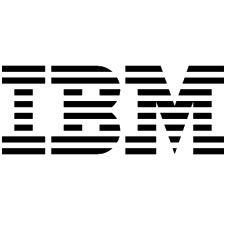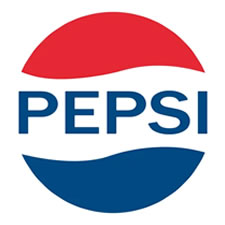Popular Logos and what you should know
Why popular logos are recognizable
Successful companies have created great logos. Whether it’s on a website or the latest product, customers can unintentionally recognize them. They show the quality and goals they want for customers. The image they portray has been bundled up primarily with their logos. In fact, with the cleanest and most straightforward design, they have become noticeable worldwide.
This blog will explore the top 10 most famous logos. There are numerous well-known firms whose logos initially featured complex visuals that later became straightforward, flexible designs.
Definition of a logo
A symbol or logo that represents an organization. Such “symbols” can be traditional, intricate, straightforward, minimalistic, multicolor, or one color. Known as logos, they inform or convey a critical message to the general population.
Illustrated visual representations are the best and simplest connections between businesses and customers.
How to recognize a logo
A commercial logo can help leverage any marketing strategy. A logo should be tailored to the objectives of the business and its target market, streamlining concepts and achieving global recognition.
Remember. Logos should be memorable but forgotten. A successful logo can be achieved by first analyzing the top logos. So, what’s the secret sauce? Let’s look at the ten most memorable symbols of all time.
Even though large corporations are well-known and iconic in society, when you hear their names, the first thing that comes to mind is usually a set of simple-to-draw images that serve as their logos.
Branding plays a role in memorability. A study listed more than 100 famous logos of worldwide brands, and they were grouped into categories:
- Logos with similarities to other ones.
- Those that contain “organic” and “illustrative” wordmarks.
- Logos that are called “boring” or “pretentious” designs.
Memorable Logo Traits
The most memorable logos create a visual connection by quickly identifying a graphic. However, these famous logos already have a legacy in the market. They will continue to be used due to their strong tradition and influence in marketing.
Steps for a Successful and recognizable logo
Logos have different purposes and personalities. These are generally separated into groups:
- Organic – Reflect warmth, fun, boldness, companionship, humanity, freshness, care, and innovation.
- Illustrative – Emit trendiness, the attention of others, being the first in cooperativeness, vanguard, and focus more on the aesthetic image.
For example, the Microsoft logo has transitioned from the initial Windows system to the online marketing of web services. The Windows logo had excess gradients and colors, making marketing difficult. Hence, this was simplified.
While businesses need to lead the way to avoid falling behind or having their logos become outmoded, very few do so. Some brands are not aiming for such extreme changes but to continue with tradition because they have recognition or the target market.
Most Recognizable Logos In the World
 Apple
Apple
One of the most iconic and popular logos in recent memory is that of Apple. The company is instantly recognizable worldwide, and when people think of Apple, they immediately think of its technological products. Here, the brand’s iconography and history are effectively put to use. Rob Janoff created Apple’s colorful logo, but through time, the company’s logo changed to be more straightforward with fewer colors to make it easier to show the brand.
When the search engine was first developed in 1998, it had a logo made from the Antiqua typeface that appeared out of scale. Over time, however, it altered to include a more vibrant color scheme and vectorized forms for the users. The Google logo has been reduced to a single symbol with the capital “G” in modern times. However, the apparent color scheme still makes the brand’s logo recognizable.
 Coca Cola
Coca Cola
Being one of the world’s most enduring and recognizable trademarks sets the Coca-Cola logo apart. The product was developed in 1900, and over the years, the brand has continued to provide its services to various audiences by generations and periods.
The beverage had to change and adapt to eras that were not its own, yet the original logo had to be repeatedly recreated without losing its distinctiveness. The logo kept the same in the traditional style since its durability demands that it be unchanged and not deviate from the logo that everyone recognizes, in contrast to the beverage and its presentation, which had to adapt and endure several alterations.
Nike
The Nike logo, designed in 1971 by Carolyn Davidson, is notable because it communicates with a particular target market: the sports industry. The logo is in harmony with all the characteristics of the sports brand’s target market. The feather represents the goddess of the wind, and the direction to a specific side denotes power and speed, so the simple logo corresponds to the target audience.
Mc Donald’s
The enticing letter “M” and the name beneath make the McDonald’s logo stand out. The logo’s use of the color gold conveys warmth and joy. The enormous letter, designed by Jim Schindler in 1961, stands out for its distinctiveness and connection to architecture. The company’s construction-related philosophies have a different impact on the design.
Microsoft
Windows is the first product people think of when they hear the name Microsoft. This is due to the historical connections between both fields. The Microsoft logo has been there since 1987, but as time passed, the business produced the Windows user interface for PCs.
Ultimately, the business merged the logo’s name with a Windows vector of four vibrant squares, which stand in for the Windows interface. Helvetica was used to create the new logo, making it simple for customers to recognize.
Disney
Walt Disney offers a familiar and trustworthy logo for young audiences, featuring the signature of the creator of Mickey Mouse himself. The logo has undergone alterations over the years but has not lost the imagination of the creative cartoonist. Due to its distinctiveness and creative use of curves and shapes that make it more aesthetically pleasing, catchy, and enjoyable for families, the handwriting design sets itself apart from other companies and is more original.
Amazon
The logo of Amazon, one of the list’s newest firms, has undergone several improvements to become a more straightforward, less cluttered design. A triangle shaped like a letter “A” was placed over an aquatic backdrop when the logo first debuted, then later, it was altered to a design made of letters and a solid yellow form below the name.
This symbol changed into a grin, signifying the contented and joyful clients who take advantage of the variety and high quality of the online retailer’s sales.
IBM
IBM’s logo and Coca-Cola’s are among the oldest on the list. The logo’s handwritten typefaces and beautiful yet complex symbols were used from 1888 until 1946. The letters of the logo were kept simple until 1947 when they were changed to a blue tone and given a more modern typeface appropriate for the time.
Paul Rand’s plan to add dividing lines to the logo was a success in 1967, and the design has since remained the company’s logo with just the letters’ colors altering, as in Apple’s instance, from shades of gray, black, or blue.
Pepsi
Coca-Cola’s rival, Pepsi, is identified by its round logo composed of primary colors: white, red, and blue. Although the font has changed over the years, it remains one of the most essential logos in marketing history. The primary colors and its circular shape make it easy to explore the design when using it in their products.
Takeaway on Branding & Popular Logos
Whether it’s a social media platform, a telecoms company, or a small dentist practice, logos play a crucial role in identification.

 Apple
Apple
 Coca Cola
Coca Cola





